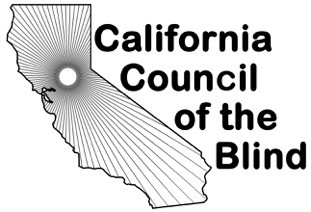By Doug Rose, Secretary Humboldt Council of the Blind
Nearly 21 million Americans, many 65 years or older, have low vision or are blind. For us, inability to clearly read a prescription label can result in unnecessary injury or death. Accessible prescription labels resolve this dangerous dilemma.
Some of you have been advocating for your pharmacy to provide this service. In Nevada, the Nevada Council of the Blind got Senate Bill 131 passed. SB131 is a prescription reader bill requiring Nevada retail pharmacies to provide accessible prescription labeling upon request. More information can be found on the Nevada Legislature site at www.leg.state.nv.us/Session/79th2017/Reports/history.cfm?ID=358, and the language of SB131 can be found at www.leg.state.nv.us/Session/79th2017/Bills/SB/SB131_EN.pdf.
Accessible labels include talking labels, large print labels and braille labels. An accessible label increases the chance that we're taking the correct pills, and the right dosage. It also helps us know when and how to refill our prescription, and enables us to safely and independently manage our health care needs. In the past, we used large print labels or rubber bands, and felt the shape of the pill, or relied on sighted assistance to identify the right drug. These are stop-gap measures at best.
At the recent California Council of the Blind convention, a resolution was passed to ask the legislature for a law requiring pharmacies to provide this service. Why is a law necessary? Accessible prescription labels are available across the US and Canada, but not every pharmacy participates in offering these options. Adoption of this technology is driven by demand from the consumer. If you need this service, ask your pharmacist for these labels. There is no extra charge for an accessible label.
Our council of the blind advocated that one of our local independent pharmacies start using accessible labels. We chose this pharmacy because they provide free delivery. Also they are able to make the talking labels locally. Some of the chain stores such as CVS, offer talking prescription labels, but through mail-order only. The orders are shipped to Maryland where they record the label. This means your prescription could take up to a week to be filled, whereas our independent store can provide same-day talking labels. The system we advocated for is from En-Vision America, called ScriptAbility. We chose to ask for this system because the pharmacy can be equipped to provide all three label options: talking, large print and braille labels. The ScripTalk talking label consists of a RFID tag placed on the bottom of your medication bottle by the pharmacist. You're loaned a prescription reader device where you place the bottle, so you can hear the label read aloud. There are also mobile apps that work with ScripTalk RFID labels that turn your phone into a talking prescription reader. So no longer do we need to fret about what medication we're about to swallow! Accessible labels also give you access to the patient information sheets that come with most medications.
More of us need healthcare services, so it will be a continuing effort to ensure all of us have access to the various components of the health care system. Medication labels are only one component. For example, many health care providers handle patient care through online portals. This works well for those using an accessible device, but what about those who don't? This is only one instance of the current and changing health care system. Surely many of you readers can cite a variety of other inaccessible health care situations. Contact me if you want to discuss accessible prescription advocacy in your neighborhood at 707-839-0588 or dougdrose@suddenlink.net.
If you would like more information about advocating for accessible prescription labels, go to www.envisionamerica.com/advocacy. You can also contact June Robbins at En-Vision America at jrobbins@envisionamerica.com or 800-890-1180 Ext. 123.


